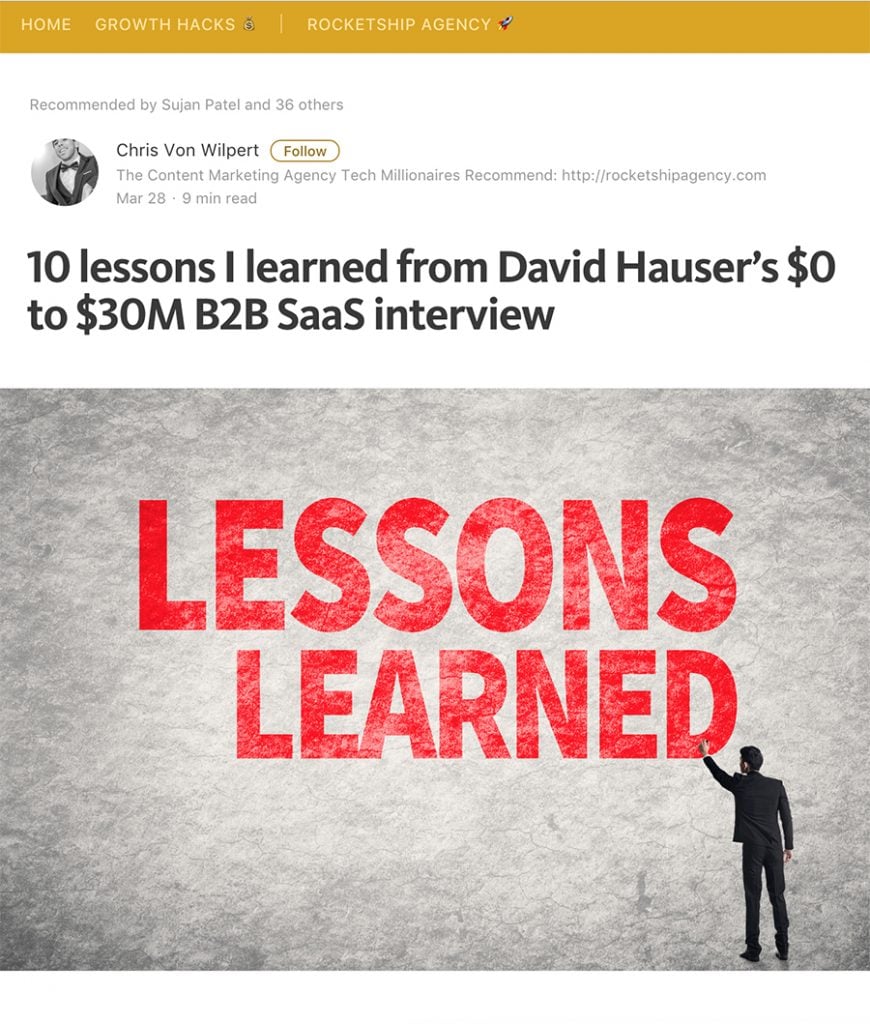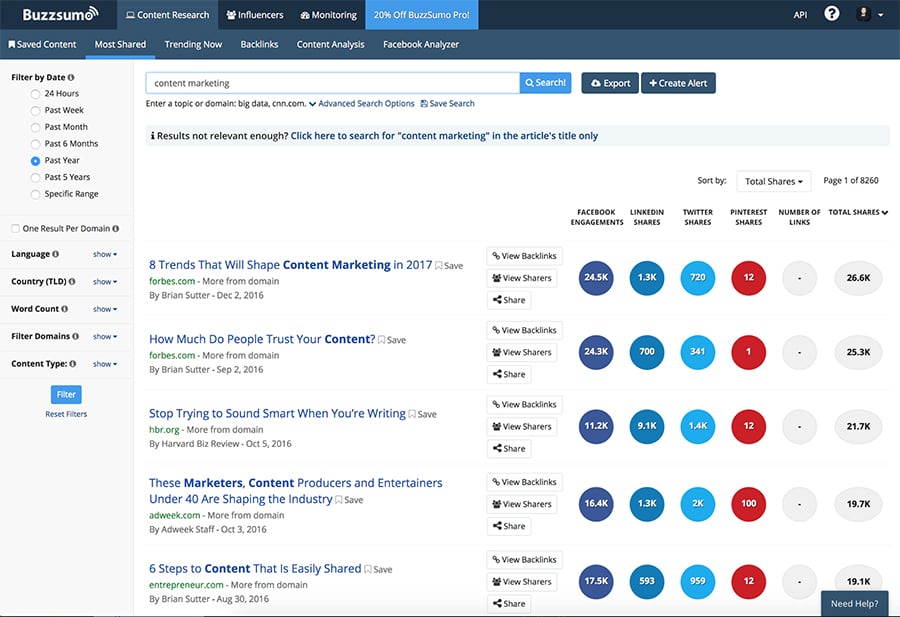Top 6 Backlink Building Tricks For eCommerce Stores
Got an eCommerce store that is still in the doldrums of pages 4, 5, and 6 of Google, and not ranking for supposedly non-competitive keywords? This article has got you covered with strategies that your competitors are already implementing to rank on top positions on Google.
Black-hat SEO backlink building used to be the way so many of us did SEO. Today, though, it’s just not as effective anymore for long-term success. Instead, white-hat SEO strategies should be a core part of your arsenal as you look to become more visible on Google by ranking higher.
Backlink building doesn’t have to be difficult or complex. It just requires patience and persistence. It’s worth it too, as organic traffic (traffic coming from keywords) converts amazingly well - provided you’re high up in the rankings. If you can get to number one, you could gobble up 18% of all organic clicks for that particular keyword
Let’s take a look at the top 6 backlink building tips that most small and medium-sized eCommerce stores are already using. If you don't have your own eCommerce store but only planning to get it, don't hesitate! Check out these best-selling eCommerce website templates for any type of products and services.
1. Use Blogger Outreach
There are bloggers out there who have the kind of site visitors you want. They have:
- Thousands of weekly visitors,
- Visitors who are interested in the products you’re selling,
- And most importantly, a backlink value (authority) that can pass link juice to your site. Basically, if you can get a backlink from bloggers, it puts your site higher up on search engines.
Don’t get jealous; instead, think about what these bloggers can do for you.
More importantly, think about what you can do for them.
A lot of bloggers are happy for others to come along and guest post on their blog. Hey, they need the content.
You could be their next guest blogger, who writes about a topic related to your store/niche and includes a link to the said store. But how do you find relevant bloggers that would be willing to have you write for them and link to your site?
To find high domain authority bloggers, pop over to Google and type in either:
- Write for us <your niche> >
- Guest post submission <your niche>
- Submit guest post <your niche>
- Accepting guest posts <your niche>
For example: submit “guest post” fashion blog

Then, get in touch with the blogger with your idea and an outline of your post.
If you can’t write for jack, hire a writer who can.
2. Reverse Engineer Backlink Campaigns Of Your Competitors
We hate to break it to you, but your competitors are already on Google - and they’re already backlinking.
Your strongest competitors are - gulp - doing very well.
Again, though, don’t sit there getting all jealous. Instead, think about what you can learn from them.
Type your main keywords into Google. Ignore the authoritative websites that show up first, such as Wikipedia, and instead focus on the smaller sites like yours - but which are doing better than yours.
These are your competitors.
Find the websites that are linking to them, and figure out which websites you can get to link to your store. You shouldn’t do this manually. Instead, you can use a reverse engineering tool, such as Ahrefs , that allows you to put a competitor’s site into its Site Explorer. There is also a free tool OpenLinkProfile , which works pretty well:

Then, you need to hit the “backlink” section and read the results.
If the results look good - not spammy - you should start digging further to see where the links are coming from. Then, it’s your job to make an effort to get links from these sites to your site.
3. Measure Backlink Effects
The next step is to put your best metrics hat on and use a backlink tracking tool that measures the progress of your backlink campaigns.
Why? Because without these metrics, you just won’t know what’s working and what’s not working in your campaigns.
Here are the metrics you need to measure, as well as the tools you can use to measure them:
Number Of Backlinks
Wanna know how many backlinks you have? Wanna know if you have just one instead of a hundred?
(No one wants to see that scary information, but you have to know it)
You can use Moz to help you do this. Moz unveils insights like never before so that you can keep track of your number of backlinks.
Number Of Referring Domains
Let’s say you have fifty backlinks. That’s cool, but it only tells half the story. You still don’t know how many domains are linking out to you.It could be five or six, or it could be as many as fifty.
You can use RankTrackr to help you, a powerful SEO tool that makes it easy to monitor your backlinks and check the number of referring domains.
Authority of Referring Site
Google loves authority sites. If you can get an authority site to link out to you, you’re onto a winner. The best way to assess authority of a site or a backlink is to use DA (domain authority) or PA (page authority) metrics from Moz.
One easy way to check for this data is with CheckMoz tool
Average Ranking Of Keywords Of Your Site
It’s likely that you’re going to have a lot of keywords.
But how do you keep track of them all? How do you know which ones are on page one of Google and which ones are miles behind in the remote darkness of page forty-four?
More importantly, it’s better to look at average rankings of all unbranded keywords of your website. You can achieve this with Nightwatch, which is a neat search visibility tracker with great segmentation and keyword discovery abilities. The difference between Nightwatch and other tools is that it makes it easy to discover new keyword opportunities when your site starts ranking for particular keywords, and to observe your average ranking or search visibility on a particular segment of keywords.
There are also other important SEO metrics for assessing search visibility growth effectively that you should be monitoring.
4. Backlinks To Product Subpages
 Price comparison sites are like gold dust for anyone in the eCommerce sector. Not only do they get your products seen on these sites, but they also present awesome opportunities for some backlink love. This gives even more juice to your SEO campaign.
Price comparison sites are like gold dust for anyone in the eCommerce sector. Not only do they get your products seen on these sites, but they also present awesome opportunities for some backlink love. This gives even more juice to your SEO campaign.
For one thing, price comparison sites have worked on their SEO more than you have at this stage. They’re probably already on page one of Google. This means that you can effectively climb aboard and reap the rewards of their visibility with your long-tail keywords while your own page makes its way up the rankings.
Secondly, you can advertise your product on these sites and link out to your product subpages. This is brilliant advertising and it’s great for SEO.
Also, it’s worth noting that eBay lets you link out to your target products. This further boosts your SEO campaign. All you need to do is upload your product and include relevant, keyword-rich anchor text with a link in the description.
If you don’t have the time to work on this each day, you can automate the process. LinkBird is a cool all-in-one SEO tool that helps in this regard. It finds the best sites for the best backlinks, finds the links your rivals are using, and also tracks your rankings.
5. Start A Blog On Your eCommerce Store
Out of all the tips covered so far, this one might seem like the hardest because it requires you to:
- A) Write,
- B) Well well,
- C) Write frequently.
If you don’t fancy yourself as a writer, the next best thing is to hire one. Then, you need to pick some general topics related to your store and the products you sell, before publishing the articles.

But you’re not done there. The trick is to ask other people in your general niche to publish links to your articles.
It’s all about forging connections with related bloggers. You can reach out to bloggers on social media - especially Twitter and LinkedIn. Always remember to offer something in exchange for them doing you this favor.
To double-down on content, you could also get involved with some influencer marketing. Find an influencer or two in your niche who have a strong social media following. Then, invite them to guest blog on your website. From there, it’s plain sailing as it’s highly likely that they’ll link out to their article on your site from their site.
6. Exchange Links With Related Site Or Blogs
Ask anyone starting an online business - be it eCommerce or something else - and they’ll tell you that one of their biggest aims is to get important people’s attention. We use BuzzSumo content research to find articles that got the most shares on social networks:

You can easily find influencers and blogs, which will allow you achieve maximal exposure if you can get them to publish your content or write about you.
Once you’ve grabbed the attention of a fellow blogger related to your field who has a sizeable social media following, it’s then a case of building a connection with them. The easiest way to do this is by asking them what you can do for them.
You can grab someone’s attention by consistently posting good content and, where applicable and possible, tagging them in any posts shared on social media. Eventually, they might sit up and take notice.
However, the quickest way to make a connection with someone and exchange links is to go straight for the jugular and ask them outright what you can do for them. You need to make it very clear that your ultimate aim is to exchange links with them.
Wrapping Up
One of the key takeaways from this article is that backlink building should also be seen at times as relationship building. The more relationships you build with bloggers, the more backlinks you will get.
Building relationships takes time, but it’s essential that you’re not a douche. Don’t be all take and no give. You have to give before you can take. But also, there has to come the point where you’re clear about your intentions. You’re not Mother Theresa - you want something out of this, so let people know. Hey, you’ve got an eCommerce store, and you’ve gotta make it visible on search engines! Of course, just remember to think of ways you can provide value to website owners and their audience.
Other than that, have patience and always, always use tools. You don’t have the time to do this manually. And if you’ve got something you’d like to add, feel free to leave a comment in the box below!
Related Posts
Top 10 Quick Ways to Increase Your eCommerce Website Conversion Rate
Choosing the Best eCommerce Platform [Free eBook]
How to Improve Your eCommerce Site for Free
10 Things to Consider when Designing an eCommerce Website
Good eCommerce UX Gives Shoppers What They Want Without Them Knowing It

Get more to your email
Subscribe to our newsletter and access exclusive content and offers available only to MonsterPost subscribers.



Leave a Reply
You must be logged in to post a comment.